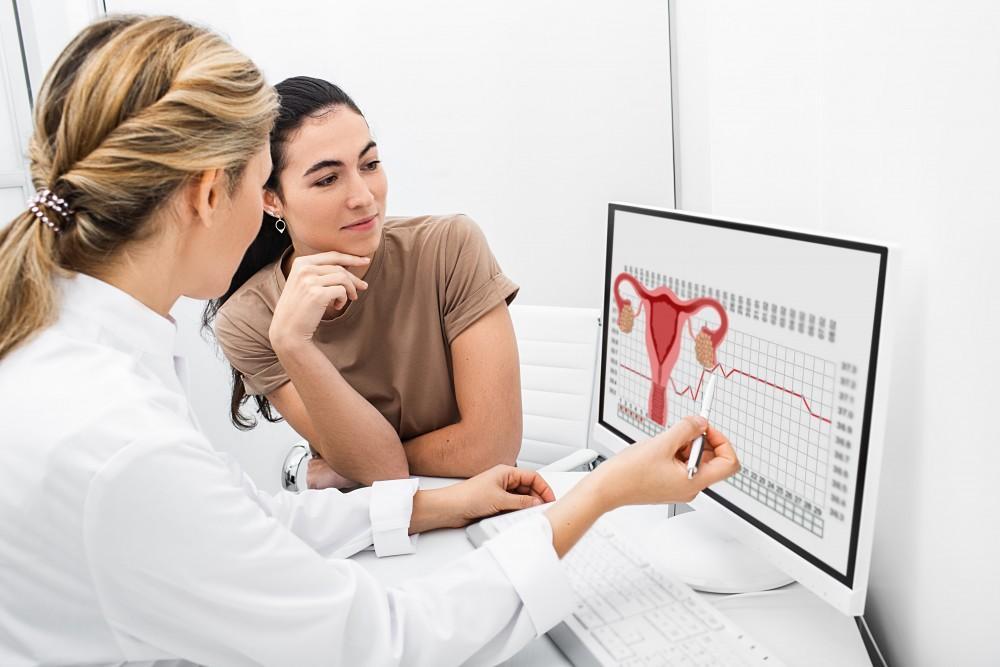Get Online consultation with 3 Easy Process
- Pay Consultation Fee (RS.1000) by using QR Code
- Send payment screenshot on whats app: +91 9910873175
- After Verifying Your Payment, We Will connect you with doctor


Hysteroscopy is a cutting-edge medical procedure that allows gynecologists to visualize and examine the inside of the uterus using a thin, lighted tube called a hysteroscope. This slender instrument is carefully inserted through the cervix and into the uterus, providing real-time imagery of the uterine lining and cavity. Hysteroscopy Treatment can be performed for diagnostic purposes or as part of a surgical procedure to address specific issues.
Hysteroscopy is a way through which a doctor can have a closer look into the cervix and the uterus for problems.
These are the problems that lead to abnormal bleeding and severe cramping that many women today complain of. If you are one such woman, hysteroscopy will help your lady doctor learn more about your reproductive health, thus, treating you better.
You may also require a hysteroscopy treatment if you observe unusual Pap results, Fibroids, or scarring on your uterus and also if your IUD (intrauterine device) has come out of position. In case you have had more than one miscarriage or face issues having pregnancy, the procedure will help your doctor understand the problem and operate.
Hysteroscopy are basically of two types: Diagnostic and operative.
Diagnostic Hysteroscopy
As the name suggests, it is done to diagnose uterine problems. To confirm the diagnosis of the problem, diagnostic hysteroscopy is recommended. The procedure takes approximately 30 minutes to perform and is usually done on a day-care basis. This procedure can help identify abnormalities in the uterine cavity like:
Uterine Fibroids
Uterine Polyps
Uterine adhesions
Any malignant mass
Operative Hysteroscopy
As the name suggests, it is done to treat the abnormalities that were found during diagnostic hysteroscopy. If any abnormalities are found, then an operative hysteroscopy can be performed simultaneously with diagnostic hysteroscopy hence avoiding a second surgery. During this procedure, surgical instruments like scissors, forceps and graspers are needed to remove any uterine growth or adhesions like:
Hysteroscopy with Myomectomy
Hysteroscopic myomectomy is done for the complete removal of the fibroid without causing damage to the normal uterine tissue. It is the best option for women who want to have children after the procedure, or for those who want to keep their uterus intact.
Hysteroscopy with Polypectomy
Polyps found inside the uterus (endometrial polyps) can cause heavy menstrual bleeding, irregular bleeding, or abnormal bleeding after menopause. In this case, Hysteroscopic Polypectomy may be suggested to remove uterine polyps.
Hysteroscopy with Uterine Adhesiolysis
While undergoing an intrauterine procedure, such as D&C, myomectomy, or a miscarriage, many women may develop scar tissue which can partially or entirely destruct the uterine cavity. The condition is known as Asherman’s Syndrome. In these cases, Hysteroscopic adhesiolysis is suggested, which involves the removal of adhesions in the uterus.
Hysteroscopic Metroplasty
Congenital abnormality like uterine septum is a common reason for recurrent miscarriages. This abnormality can be treated by safely cutting it through a hysteroscope so that it can come back to a normal shape. After the procedure, patients are kept on hormone therapy for a period of 1 or 2 months that helps in rebuilding the uterine cavity.
Hysteroscopic Endometrial Ablation
Women who are facing irregular vaginal bleeding, and for whom medicines have failed to bring any relief, may be suggested with endometrial ablation keeping in mind their reproductive status, that is if they are done with childbearing. In this procedure, the hysteroscope utilizes energy or hot water to resect or destroy the endometrium. After the procedure, about 40% of women will have lighter menses, another 40% of them will have complete cessation of their menses, and 20% of them will have no change in their symptoms.
Hysteroscopy with D&C
To evaluate the causes of abnormal uterine bleeding and to rule out malignancy in post-menopausal patients Hysteroscopy with D&C (Dilation and Curettage) is performed. It involves the dilation of the cervix and scraping of the uterine lining, and it is done under anesthesia in the operating room.
Hysteroscopic Tubal Cannulation
Women with mild tubal blockage can opt for hysteroscopic tubal cannulation. With the help of hysteroscopy, the opening of the fallopian tubes is visible within the uterine cavity. A small catheter is placed through the opening of the fallopian tube to establish tubal patency. To confirm tubal patency a laparoscopy or a post-operative hysterosalpingogram can be done.


Step1.
To help you relax and be able to undergo the pain, the doctor prescribes you a sedative. If required, she may also give you anesthesia.
Step 2.
After ensuring that you don’t feel much pain, the doctor proceeds by inserting a tool named Sim’s Speculum in the cervix for a better and clearer vision of the area.
Step 3.
Next, the cervix is dilated through Cervical Dilators which allow for a hindrance-free pathway to the fallopian tubes and the uterus. This step lowers the risk of injury which the cervix might have to suffer.
Step 4.
Once there is enough space for the hysteroscope to be inserted, the tube is gently pushed through the vagina into your uterus.
Step 5.
Next, the doctor pushes some liquid solution that helps expand the uterus and also clears away any mucus or blood inside.
Step 6.
Once the tube is set up and the uterus is cleaned, the light on the end of the hysteroscope allows the doctor to check the lining of the uterus. She also checks the opening of the fallopian tubes to diagnose properly.
Step 7.
Lastly, small instruments are pushed into the uterus through the hysteroscope if it is an operative hysteroscopy.
The whole procedure might take anywhere between a few minutes to a couple of hours. If it’s a Diagnostic hysteroscopy, it is ought to take only a few minutes. However, if done with other procedures like laparoscopy, the process is very likely to get extended.
Yes, its a painful procedure However, to ensure that the pain is not severe, the first step of the procedure helps. That is when the doctor gives you a relaxing sedative or anesthesia that numbs your body, thus making you unable to observe the pain.
After this, the level of pain you have to undergo depends on the type of anesthesia induced. If it’s a general anesthesia, your entire body will stay numb during the whole procedure. A regional anesthesia will numb the larger part of your body that is most likely to be affected for a few hours. A local anesthesia works only on a smaller part of the body for a short time.
Thus, it is important to let only an experienced doctor operate on you as she will know exactly which anesthesia to use if any is required at all. Thus, ensuring you have to face the least amount of pain possible.
Apart from the pain, signs of infection after hysteroscopy might be visible if sterile precautions are not followed well. Issues like intrauterine scarring and pelvic inflammatory disease may also occur.
Additionally, your body might react negatively to the anesthesia-induced and the liquid used during the procedure. Make sure you have someone to drive you home after the procedure as the anesthesia will make you drowsy and thus, unable to drive.
Damage to the cervix or nearby organs like the bowel, bladder, or ovaries is rare yet possible. Mild cramping along with bleeding for a couple of days are some common possibilities.
However, all these risks can be oppressed with the help of certain precautions taken. The best of which would be to have a detailed conversation with your experienced and trusted doctor. This helps the doctor understand your case well and then tell you personalized preparations, preventions, and precautions associated with hysteroscopy.
Not to mention, hysteroscopy is a minor procedure and thus requires less hospital stay time and recovery time when compared to other major medical procedures.


Here’s what you can expect after the hysteroscopy treatment:
Like any other medical procedure, a hysteroscopy also carries certain risks:
Our IVF Specialist in Noida invites you to experience the transformative benefits of hysteroscopy. Beyond diagnosis, our hysteroscopy services encompass various treatments to enhance your gynecological well-being. Whether you’re seeking answers to persistent concerns or exploring minimally invasive treatment options.
1000+ Happy Couples with real stories from IVF patients